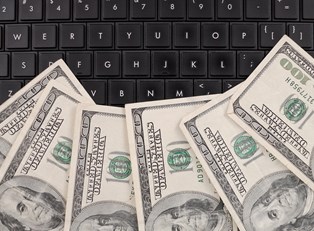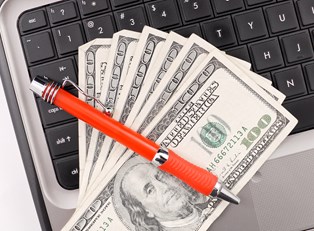Today, the issue of safely transferring money is both simplified and complicated by the sheer number of ways to do so. One of the simplest and safest ways available is by purchasing a money order.
How Does A Money Order Work?
A money order is a low cost, more secure, replacement for cash. Money orders are relatively simple to use, and work a lot like a check. They provide a way to transfer your money to a specific recipient with minimal risk. This is done by purchasing a certificate from a specialized institution. This certificate is then addressed to a sole recipient, or payee, who is listed on the certificate itself and is the only person, aside from the buyer, who can take the certificate to a specialized institution and convert it to cash. Money orders can be purchased from a bank, grocery store, or post office and are tied to a specific sum of money.
How Do I Use A Money Order?
When making a payment via a money order, the first thing to do is to find a nearby institution that issues them and purchase a money order certificate for the desired amount. Different institutions add different fees to their money order purchases, so shopping around may give you the lowest cost money order.
There are several ways to pay for a money order, but the most common is with cash. Depending on the institution, it may be possible to pay by debit or credit card. After paying, you will receive the money order itself. It is important to check to make sure that the amount you paid corresponds with the value printed on the certificate. After receiving the money order, you should immediately fill out the payment information.
The necessary information may vary, but usually you will be asked to specify the name and address of the person or company that you intend to pay, as well as your own name and address. Every purchased money order comes with a receipt in case the money order is lost or the payee claims to have never received it, as well as for general tracking purposes. After the payment information is filled out and you've signed it, all that's left is to mail the money order. Once they receive it, they just have to take it to the nearest bank or post office, provide proof of identity, and ask for it to be cashed.
Why Use A Money Order?
Money orders are often used as a payment method for transactions made online or for payments made to drop boxes, like rent. This is primarily because money orders do not require a bank account, even though they are as safe and secure as paying by check. This makes money orders especially popular among younger individuals who do not have access to a bank account of their own. If the payment you sent didn't make it to the destination, it's easy to track a money order. If you think it's been stolen or it's irrevocably lost, then you can issue a "stop payment" for a small fee.
Drawbacks to Money Orders
Payment through money orders is not without some disadvantages. One of the main drawbacks is the fact that money orders are usually limited in value to $1,000. This means that if the payment is for a sum of money larger than $1,000, you’ll need to purchase multiple money orders. You are also charged a fee to buy or cash a money order.



